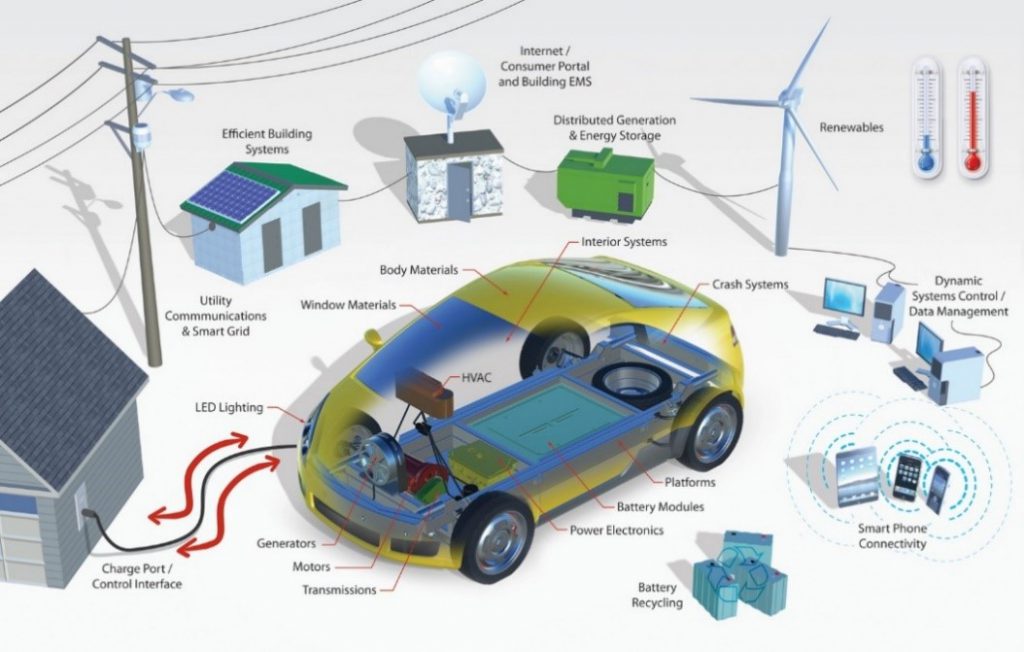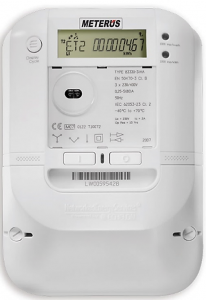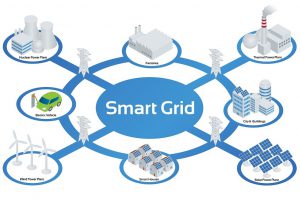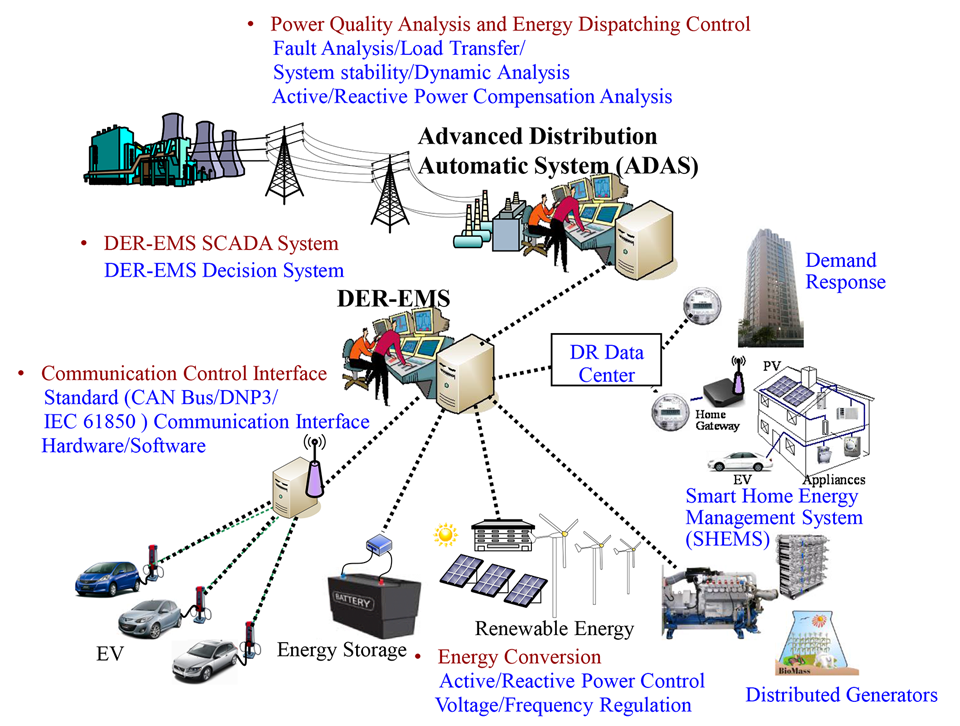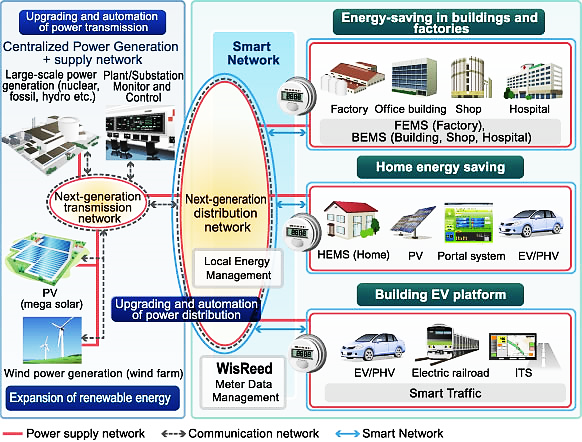The Capital Group: Kingwaytone Chinese-Polish Investment Company together with Institute – presents a unique report on the prospects for development of smart grid technology in Europe and worldwide - these are just brief abstracts of our broader study - you are welcome to discuss it and cooperate with us in this innovative field....
Basic information and an attempt to analyse the possible participation of The Capital Group: Kingwaytone Chinese-Polish Investment Company together with Institute in smart grid’s construction in business terms – material for discussion ...
I. SMART GRID IS COMING
Global energy demand is growing rapidly around the world. It is estimated that its growth rate is approx. 2.2 percent a year, which means that the current world consumption of energy amounting to 20,300 terawatt-hours will increase up to 33,000 terawatt hours in 2030.
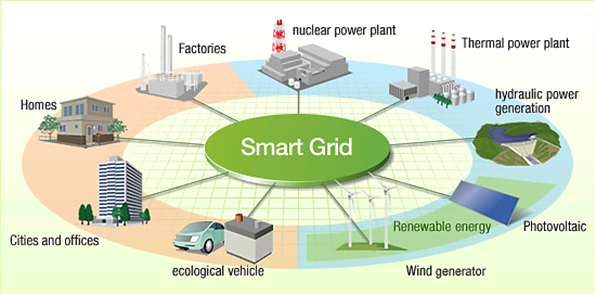 At the same time there is a challenge to use the energy more effectively than it has been used so far. This is connected with modernization of the aging energy infrastructure in a number of countries. But this is not everything. Energy systems’ optimization affects a great number of elements: starting with renewable energy sources which should be integrated with the system in a more efficient way, through creating energy storage units, using small, decentralized energy providers, to the transmission resulting in lower losses and, finally, intelligent use of energy.
At the same time there is a challenge to use the energy more effectively than it has been used so far. This is connected with modernization of the aging energy infrastructure in a number of countries. But this is not everything. Energy systems’ optimization affects a great number of elements: starting with renewable energy sources which should be integrated with the system in a more efficient way, through creating energy storage units, using small, decentralized energy providers, to the transmission resulting in lower losses and, finally, intelligent use of energy.
Coping with these challenges requires a flexible and “thinking” infrastructure that would direct energy exactly where it is needed.
Such a solution is Smart Grid. Using the latest Information technologies, Smart Grid allows for major improvements in efficiency, reliability and security of the electricity supply chain. Smart Grid is based on communication between all participants in the energy market in order to rationalize the electrical energy management. Smart Grid reduces the losses and costs related to energy transmission. This corresponds to, among others, the concept of friendly and modern cities - Smart City. Modern cities care about its society’s comfort of living and its natural surroundings.
Smart grid brings together a number of entities such as power plants, renewable energy sources, institutions, public buildings, and even single farms. Its operation is based on the scientific achievements of our times, especially information and communication innovations as the Internet and wireless routers. That is why all the units included in the Smart Grid system can communicate ad cooperate with one another in order to use electricity efficiently. Adequate IT facilities ensure data collection from electrical devices and make it possible to react to changes in demand of power supply for a given area at a given time of the day.
This allows to minimize electricity losses and save up to 10% of energy consumption.
Smart grid - where there is communication between all energy market participants, aimed at providing energy services and ensuring reduction of costs and increase in efficiency, as well as integration of dispersed energy sources, including renewable energy sources. Fulfilment of the above requirements is connected with modernization of the present power grid and optimization of all its elements.For example, EU member states have been developing their standards since 2011 . The European Commission, among others, has set up a special team for this purpose whose work is planned for 2012-2020.
- The idea of Smart Grid is communication among all energy market participants. The grid integrates power plants, both the big and the small ones, as well as energy consumers into one overall structure. Smart Grid can exist and function thanks to its two features: automation based on advanced sensors and ICT system.
- To put it simply: Smart Grid "knows" where and when there is the greatest demand for energy and the greatest energy supply and it is able to redirect excess energy to the places where it will be used beneficially. That is why Smart Grid can improve the efficiency, reliability and security of energy supply chain.
- What is more, it also makes it possible for end users to participate in the energy market and thus contribute to climate protection.
- At present Smart Grid is an idea and matter of the future. But the very near future. Technologies needed to construct such an intelligent network have already been used.
II.WHAT IN FACT IS SMART GRID?
Smart Grid is a large-scale system that integrates other systems responsible for: power generation, distribution, operational management of the power grid and continuity of supply, energy market management, customer service and for new services for end customers, including services related to the management of home area network (HAN). BASIC ELEMENTS OF SMART GRID:
- Smart metering - it is the basis element of Smart Grid. It is a measurement infrastructure ensuring remote measurements of quantities related to the electricity flow and data transmission to clients’ systems, e.g. to home area networks (HAN). While analysing the current state of power systems’ development, lots of industry experts indicate that one of the first stages of Smart Grid’s implementation should be installation of modern digital electricity meters (as well as other utilities’ meters) at individual, public and industrial consumers.
From the technological point of view, this procedure is quite simple - functionally advanced meters with numerous network interfaces are already available, also with the possibility to use power lines as a medium for data transmission over greater distances. Intensive actions taken by various entities in this respect have already been observed in many countries.There have also been first pilot installations of "smart" metering systems covering single towns or municipalities.
- METERS - Smart Metering (SM).
SM – this is only one of the ways towards Smart Grid. Smart meter – it is an intelligent electricity meter, one of the smart metering system’s elements that can be used to measure energy consumption, and thus obtaining more information than when using a conventional meter. It can also be used to send and receive data by means of electronic communication system.These systems include intelligent electricity meters of energy consumers, telecommunication infrastructure, central data base and management system. Smart meters are a part of smart power grid and should not be considered in isolation therefrom. These intelligent metering systems allow two-way communication, in real-time, of IT systems with electronic electricity meters. Moreover, they can automate the entire process of energy consumers’ settlement, starting with obtaining of metering data, through their processing and aggregation, to invoice issuing. Such a system is composed of:AMI - Advanced Metering Infrastructure - it is an integrated set of elements: smart electricity meters, communication modules and systems, hubs and recorders, that enable two-way communication, through various media and various technologies, between the central system and selected meters. Such a network allows to collect data concerning given customers’ energy consumption, send control signals to devices and to configure them remotely. AMI is different from traditional AMR (automatic meter reading) because:- it allows for bidirectional communication with the meter,- it is prepared to cooperate with HAN,- it is characterized by a higher complexity of the grid,- it can cooperate with a smart grid.
Photo: MDM ( Meter Data Management) – business software used for meter data management. In order to illustrate how this system works we will use examples from both domestic and municipal environment. Thanks to the AMI – Advanced Metering Infrastructure installed in houses it is possible to communicate among all the devices or meters connected thereto, and the central system operating within the Smart Grid.
Example - it allows to send control signals to the equipment in one’s house and to configure it. Consequently, a washing machine or a dishwasher can be set in such a way so as it works when the electricity is the cheapest, and devices whose operation is not needed at a given time do not consume electricity at all.This infrastructure cooperates with the Home Area Network (HAN) that makes it possible to manage the equipment, also thanks to the possibilities offered by wireless Internet.
- Power Line Communication (PLC) - in order to ensure appropriate cost of communication within the Smart Grid networks, one communicates using the existing grid infrastructure, it is the so called Power Line Communication. The main task of Power Line Communication is reliability, that is why scientific research has been conducted in recent years concerning development of effective methods of PLC modulation. A number of standards have been created with the purpose of PLC’s massive spreading, e.g. PRIME, OSGP and G3 standards.
III Smart Grid implementations in Europe and around the world
Appropriate infrastructure cooperating properly is necessary for proper operation of an intelligent electro-power network.
It is necessary to install a great number of meters, sensors, fuses and, most of all - metering systems - Smart Metering.
All these things guarantee efficient and modern electric power supply to a municipal centre. At present it means the maximum use of renewable energy sources, saving electricity and minimizing losses during electricity transmission. In the world there are works being carried out related to Smart Grid’s implementation.The greatest implementations have been completed in China, United States and in Europe - Italy, Spain.
The first implementation of AMI system is currently carried out by Energa-Operator S.A. where Atende Sofware implements MDS system used to acquire and manage metering data.
The AMI implementation by Energa-Operator S.A. is one of the greatest implementations carried out in Central and Eastern Europe and it is a source of important experience for the entire power sector in the EU.
As of today the realistically key element of smart grid is the smart metering of end-users i.e. customers.
The number of all the meters around the world: 600.83 million (data as of 31.09.2015) – installation map : http://www.atendesoftware.pl/smartgrid/about
IV Smart grids - ADVANTAGES:
In view of the emerging threats both as regards the deficit of primary energy resources and too low efficiency of energy generation, transmission, distribution and use, more and more people believe that is necessary to introduce a new quality to power grids - to create intelligent energy supply systems commonly known as "smart grids".In its most common meaning, this notion means supply of electricity or, more broadly - of power services, by IT means, ensuring cost reduction and efficiency improvement as well as integration of dispersed energy sources, also renewable energy sources.Although there is still no internationally acceptable definition of this term, it is undisputed that this concept requires interdisciplinary research and solutions in the field of modern technologies. It is also necessary that research centres cooperate with business and innovative enterprises. Such corporate activities have been developed in numerous countries and research centres. There are a great number of objective factors facilitating development of this field of knowledge and technology.
Some of the most important advantages are:
- ensuring energy security by eliminating gaps in the provision of energy services to customers and by maximizing the efficiency of energy flow from the source of its production to the final consumer. This purpose is served by, among others, better, smarter and faster diagnostic and control systems allowing for more advanced management of energy flows, security systems, processes, network restitution processes, etc. It is also important to ensure safe and reliable data transmission conditioning the introduction of automated, rapid and self-repairing procedures as well as co-ordination of control at different levels of the system, from the local to global level, at appropriate speed and appropriate level of redundancy.
- minimizing the costs of electric power services by optimum and continuous integration of local environmentally-friendly energy resources.
- ensuring differentiation and individualisation of quality levels of the energy supplied, in accordance with customers’ needs by, among others, the use of advanced power electronic systems, e.g. FACTS or CUSTOM POWER systems.
- extending the functionality of the services provided by the supplier to the recipient, i.e.:
- smart metering and invoicing (e.g. bi-directional meters, volatility of the price of the energy being consumed at the time),- energy management and monitoring of the energy supply conditions, etc.Such “intelligent” equipment enables recipients to participate in the market play and to individually generate and store energy. The ability to interact with mains power supply allows for more accurate conclusion of supply contracts which are better adapted to all the parties’ requirements and needs. One of the stages in this process is the construction, on the basis of the meters installed, of distributed systems monitoring the status of electrical power sector networks and / or industrial networks. It is not the same as “IT implementation” in the colloquial sense of this term.The use of the latest achievements of science, including computer science, is just one part of these actions.
- the need to restructure the existing power networks. European environmental objectives cannot be achieved without changes in power grids. The urgency to invest in renewable resources, dispersed generation and electric vehicles requires infrastructure that is able to actively integrate the activities of producers, consumers and entities fulfilling both these functions and to meet the growing demand for electricity.
Traditional network structures, designed for one-way flow of energy, have difficulties with integrating dispersed sources. The reversal of energy flow directions caused by the presence of dispersed sources sometimes leads to serious technical problems as regards safety and reliability of the system operation (blackout).Smart grids provide an opportunity to master the cascade development of emergency events. The more and more popular concept of microgrids with a defined level of autonomy can also be included into this category of activities. Microgrid may be a single household, a separated area or group of customers with a balanced consumption and local energy generation. Proximity of the recipient in relation to generation sources reduces network losses and creates the conditions for better integration of dispersed sources.
V IT security
One of the main problems concerning Smart Grids is also the issue of possible cyber attacks.
- The idea, concept and topology of smart grids is based on IT solutions that involve certain risk.
Smart grid’s functioning and efficient control of its operation depends on many computers, computer networks, software and communication technologies.
Unauthorized interference with this information technology infrastructure by a cybercriminal can lead to huge losses arising both directly and indirectly from the lack of power supply to certain recipients.
Grid complexity means that there are gaps that have not been identified yet.
That is why it is difficult to assess the risk associated with a potential attack because of the size, complexity and dynamic nature of a power grid as well as unpredictability of potential attackers.
- Therefore – there is no chance (in my opinion) that in any of the EU member states any (Chinese or other) company is admitted to let’s call it BIG SMART GRID.
That is, the company to complete, on a turnkey basis, the entirety, i.e. starting with outputting power from power units - through substations, lines, metering, automation and control and finishing with a meter e.g. in a private house.
Because in this way one can REMOTELY control, adjust and optimize energy consumption and production.
Because it offers a REMOTE control and authority over the entire system of energy security of a given region, country, continent. Due to these reasons, nobody (and especially a foreign company) will be awarded with a contract for the entirety of a smart grid.
THIS IS DEFINITELY OUT OF THE QUESTION
FINAL CONCLUSIONS CONCERNING SMART GRID:
Implementation of the smart grid idea – must be carried out "in isolated areas", “in stepwise manner” - there is no other possibility. Because it must be adjusted to the already existing power plants, networks, substations and it is in fact about first measuring the existing condition and afterwards being able to optimize it and eventually incorporate end users into this process.
- Understanding it - also as integration of dispersed renewable resources having limited availability of power and energy. Small and medium scale generation (photovoltaic panels, small wind turbines, small hydro power plants, joined sometimes with the network on the plug-and-play basis), using local resources and often integrated with the building / apartment and able to cooperate with the network creates a new concept of the so called "smart home", energetically autonomous, able to transfer excess energy produced and treating the network as a backup source.
- Thanks to smart metering it is possible to automatically reduce power (and energy) consumption at peak load times without compromising the residents’ quality of life. The existing traditional passive consumer of electricity has started to fulfil the function of an active "prosumer” able not only to consume but also to produce electricity. In the case of large-scale dispersed generation (e.g. a wind farm), the process of using (in their control) meteorological forecasting models becomes more and more common, which allows for an increased share of renewable sources and reduction of the necessary system reserve of power.
- Because the concept of smart grids encompasses a series of activities of other than technical nature related mainly to analysis of the cost-effectiveness of the projects undertaken, search for potential returns of the expenditure incurred and the use (for this purpose) of appropriate market mechanisms, contracting and financial engineering. Social, cultural and behavioural aspects created by new conditions of electricity supply are also of great significance.
- One of the barriers to the development of modern smart grids is the deficit of knowledge, and therefore too low number of properly educated staff prepared to work in this technological area. At present there is already a new profession at the top of the ranking list in the EU - a specialist in the field of renewable energy and integrator of infrastructural services.
The lack of such specialists can slow down the EU member states’ economic development, that is why lots of steps have been taken at European universities aiming at opening new educational courses focusing on smart grids. As it is commonly believed that electrical power understood in this way can be attractive to students having the ambition to solve, in their future professional activity, issues with the highest degree of complexity and with the use of advanced technologies.
At present everybody is eager to create their business plans and broadly discusses the possibilities of a smart grid. Unfortunately, usually without having any idea what it is and what its possibilities are.... We will be grateful for any remarks, comments ...


